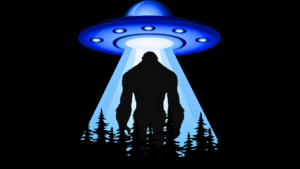High in the remote wilderness of California’s Sierra Nevada mountains, a series of chilling audio recordings was captured in the early 1970s. These recordings, now famously known as the Sierra Sounds, continue to spark fascination and debate among cryptozoologists, skeptics, and casual observers alike. Are they evidence of an unclassified primate, perhaps the legendary Bigfoot? Or are they an elaborate hoax crafted with precision and forethought? To explore these questions, we must examine the origins, analyses, and controversies surrounding the Sierra Sounds.
The Origins of the Sierra Sounds
In 1971, Ron Morehead and Al Berry, two avid outdoorsmen, embarked on what would become an unexpected investigation into the unknown. The duo frequented a remote hunting camp deep in the Sierra Nevada mountains, accessible only by horseback. Other hunters had reported hearing unusual and unsettling noises in the area—sounds that could not be attributed to known wildlife.
Armed with a portable cassette recorder, Morehead and Berry hoped to document the phenomenon. Over the course of several expeditions, they succeeded in capturing what they described as eerie, otherworldly vocalizations. These recordings included a range of sounds: guttural growls, high-pitched whoops, and rapid sequences of vocalizations that some interpret as a form of communication. Together, these audio clips became known as the Sierra Sounds.
Berry, a journalist, approached the matter with skepticism, hoping to debunk the claims. Morehead, on the other hand, was more open to the possibility of encountering something extraordinary. Despite their differing perspectives, both men agreed that the recordings were unlike anything they had heard before.
What Do the Recordings Contain?
The Sierra Sounds are composed of several distinct types of audio phenomena:
- Whoops and Howls: Long, mournful cries and sharp whooping sounds that do not resemble known animal vocalizations.
- Rapid-Fire Chatter: Sequences of vocalizations that sound like language, complete with varying tones, inflections, and pauses.
These sounds were recorded at night, often following interactions between the hunters and the unseen source. For example, Morehead and Berry would mimic the sounds or create noises of their own, prompting apparent responses. This level of interaction has led some researchers to believe the vocalizations were made by intelligent beings.
Linguistic Analysis: A Cryptolinguist’s Perspective
One of the most compelling aspects of the Sierra Sounds is their resemblance to language. In the early 2000s, Scott Nelson, a retired U.S. Navy cryptolinguist, analyzed the recordings. Nelson’s background in deciphering codes and languages gave him a unique perspective on the sounds.
According to Nelson, the vocalizations contain identifiable phonemes (distinct units of sound in language) and patterns consistent with syntax (the arrangement of words and phrases). He argued that the sounds represented a form of communication, possibly a primitive language. Nelson’s findings were detailed in several presentations and publications, sparking widespread interest in the recordings.
However, Nelson’s analysis has its detractors. Critics argue that the sounds lack the consistency required for classification as a language and suggest that human mimicry cannot be entirely ruled out. They also point out that Nelson’s findings have not been subjected to rigorous peer review.
Acoustic Properties: Beyond Human or Animal Capabilities?
The Sierra Sounds have also been analyzed for their physical properties, such as pitch, frequency, and volume.
Acoustic experts have noted several anomalies:
- Frequency Range: Some of the vocalizations fall outside the range of human vocal cords. They are both higher and lower in pitch than what is typically possible for humans.
- Volume and Power: The recordings suggest a source with significant lung capacity, far exceeding that of an average human. This is especially evident in the growls and roars.
- Unmatched by Known Wildlife: Attempts to compare the sounds to known animals in the Sierra Nevada region—such as bears, coyotes, and mountain lions—have yielded no matches.
These findings have bolstered the case for the recordings being authentic. However, skeptics caution that these anomalies could potentially be replicated using technology or carefully staged performances.
Arguments for Authenticity
Supporters of the Sierra Sounds highlight several factors that suggest they are genuine:
- Remote Location: The hunting camp where the sounds were recorded is in a remote and rugged area, accessible only by horseback. This isolation makes it unlikely that hoaxers could have staged the recordings without detection.
- Multiple Witnesses: Morehead and Berry were not alone in experiencing the phenomena. Other hunters at the camp also reported hearing the sounds, adding credibility to their accounts.
- No Proven Motive: Neither Morehead nor Berry gained significant financial or personal benefit from the recordings, reducing the likelihood of a deliberate hoax.
Counterarguments: Could It Be a Hoax?
Despite the compelling evidence, many skeptics remain unconvinced. They offer several alternative explanations:
- Cultural Context: The recordings emerged during a time of heightened interest in Bigfoot, fueled by the 1967 Patterson-Gimlin film. Skeptics argue that this cultural backdrop may have inspired the creation of the Sierra Sounds.
- Human Mimicry: Critics suggest that skilled imitators could have produced the vocalizations. With careful planning and practice, it is conceivable that humans could replicate the sounds, even in a remote location.
- Lack of Physical Evidence: While the audio recordings are intriguing, they are not accompanied by physical evidence such as footprints, hair, or DNA. This absence of corroborating material weakens the case for the recordings as proof of Bigfoot’s existence.
Cultural Impact and Legacy
Whether authentic or fabricated, the Sierra Sounds have left a lasting impression on the field of cryptozoology. They have been featured in documentaries, books, and podcasts, capturing the imagination of audiences worldwide. For believers, the recordings represent a tantalizing glimpse into the unknown. For skeptics, they serve as a reminder of the importance of rigorous scientific inquiry.
The Sierra Sounds continue to be a subject of active discussion and analysis. Advances in audio technology and artificial intelligence may one day provide more definitive answers. Until then, they remain one of the most compelling and enigmatic pieces of evidence in the search for Bigfoot.
Final Thoughts
The Sierra Sounds challenge us to consider the boundaries of what we know about the natural world. Are they the voice of an undiscovered species or a masterfully executed hoax? The truth remains elusive, but the mystery keeps the debate alive. As technology evolves, perhaps the Sierra Sounds will finally yield their secrets. Until then, they stand as a testament to humanity’s enduring curiosity about the unknown.
What do you think? Are the Sierra Sounds genuine evidence of Bigfoot, or are they just another piece of folklore? Share your thoughts in the comments below.



